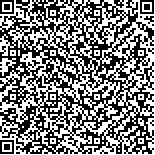李玲,董旭,吴晔,等.脑卒中后咽期吞咽障碍的相关危险因素研究[J].中华物理医学与康复杂志,2023,45(12):1088-1093
扫码阅读全文

|
| 脑卒中后咽期吞咽障碍的相关危险因素研究 |
|
| |
| DOI:10.3760/cma.j.issn.0254-1424.2023.12.005 |
| 中文关键词: 脑卒中 咽期吞咽障碍 危险因素 预测 |
| 英文关键词: Stroke Pharyngeal dysphagia Risk factors Predictive value |
| 基金项目:徐州市医学领军人才培养项目(XWRCHT20210024);江苏省科技项目(BE2020638);江苏省老年健康科研项目(LKM2022046) |
|
| 摘要点击次数: 4067 |
| 全文下载次数: 5009 |
| 中文摘要: |
| 目的 分析脑卒中后咽期吞咽障碍患者的临床和吞咽生理指标的特点,探讨咽期吞咽障碍的危险因素及其预测价值。 方法 选取符合纳入标准且疑似脑卒中后有吞咽障碍的患者169例,收集每例入组患者的临床资料,包括年龄、性别、病程、脑卒中部位、脑卒中类型、烟酒史、留置胃管、气管切开、既往病史、洼田饮水试验、咽反射情况、美国国立卫生研究院脑卒中量表(NHISS)评分及改良曼恩吞咽能力(MMASA)评分。入组患者1周内完善吞咽造影(VFSS)及纤维内镜吞咽功能(FEES)检查,根据VFSS结果将169例患者分为咽期吞咽障碍组(92例)及非咽期吞咽障碍组(77例),分别比较2组患者间的临床和吞咽生理指标差异。采用多因素Logistic回归分析明确咽期吞咽障碍的独立危险因素;利用受试者工作特征(ROC)曲线分析各危险因素对咽期吞咽障碍的预测价值。 结果 咽期吞咽障碍组与非咽期吞咽障碍组的病程、脑卒中部位、气管切开状态、留置胃管、洼田饮水试验、改良曼恩吞咽能力(MMASA)评分、渗漏-误吸评级(PAS)、耶鲁咽部残留物严重程度分级评定量表(YPR-SRS)、会厌翻折、咽启动、舌骨上移最大距离、咽感觉、咽分泌物水平等经统计学分析比较,组间差异均有统计学意义(P<0.05)。多因素Logistic回归分析显示,渗漏-误吸、咽部残留和咽分泌物是脑卒中后咽期吞咽障碍的独立影响因素(P<0.05);ROC曲线分析显示,渗漏-误吸评级、咽部残留分级、咽分泌物评分预测脑卒中后咽期吞咽障碍的曲线下面积(AUC)分别为0.890[95% CI(0.838~0.942)]、0.741[95% CI(0.669~0.806)]、0.874[95% CI(0.814~0.920)],敏感度分别为75.0%、52.2%、84.8%,特异度分别为96.1%、94.8%、85.7%,最佳临界值分别为2级、1分、1级。 结论 渗漏-误吸、咽部残留和咽分泌物为咽期吞咽障碍的独立危险因素;渗漏-误吸评级、咽部残留分级、咽分泌物评分对咽期吞咽障碍具有一定的诊断和预测价值。 |
| 英文摘要: |
| Objective To analyze the physiological components of swallowing among stroke survivors with pharyngeal dysphagia, and to identify the risk factors and their utility for predicting pharyngeal dysphagia. Methods The records of 169 stroke survivors suspected of having dysphagia were collected. The data analyzed were age, sex, course of disease, stroke site, stroke type, tobacco and alcohol history, intubation, tracheotomy, past medical history, Kota water test results, pharyngeal reflex, as well as the scores on the National Institutes of Health Stroke Scale and the modified Mann Assessment of Swallowing Ability (mMASA). All of the patients had been imaged videofluoroscopically and fiber endoscoped. The data were used to divide the subjects into a pharyngeal dysphagia group (n=92) and a no pharyngeal dysphagia group (n=77). The physiological components of swallowing were compared between the two groups. Multivariate logistic regressions were evaluated to identify the independent risk factors for dysphagia, while the receiver operating characteristic curve was used to assess the predictive value of the risk factors. Results There were significant differences between the groups on average in terms of the course of disease, stroke site, history of tracheostomy, intubation, water swallowing test results, mMASA scores, penetration-aspiration ratings, Yale Pharyngeal Residue Severity Scale (YPR-SRS) ratings, epiglottis turnover, pharyngeal initiation, maximum displacement of the superior hyoid bone, pharyngeal sensation and pharyngeal secretion. Multivariate logistic regression analysis showed that leakage-aspiration, pharyngeal residue and pharyngeal secretions were independent factors influencing dysphagia after a stroke. According to the ROC curve, the PAS score had an area under the curve (AUC) of 0.89, with 75% sensitivity and 96% specificity when level 2 was chosen as the optimal cut-off value. The Marianjoy secretion scale scores had an AUC of 0.87 with 85% sensitivity and 86% specificity when 1 point was chosen as the optimal cut-off value. YPR-SRS ratings had an AUC of 0.74 with a sensitivity of 52% and 95% specificity when level 1 was chosen as the optimal cut-off value. Conclusions Penetration-aspiration, pharyngeal residue and pharyngeal secretions are independent risk factors for dysphagia after a stroke. Leakage-aspiration rating, pharyngeal residual grading and pharyngeal secretion scoring are valuable in the diagnosis and prediction of pharyngeal dysphagia. |
|
查看全文
查看/发表评论 下载PDF阅读器 |
| 关闭 |
|
|
|